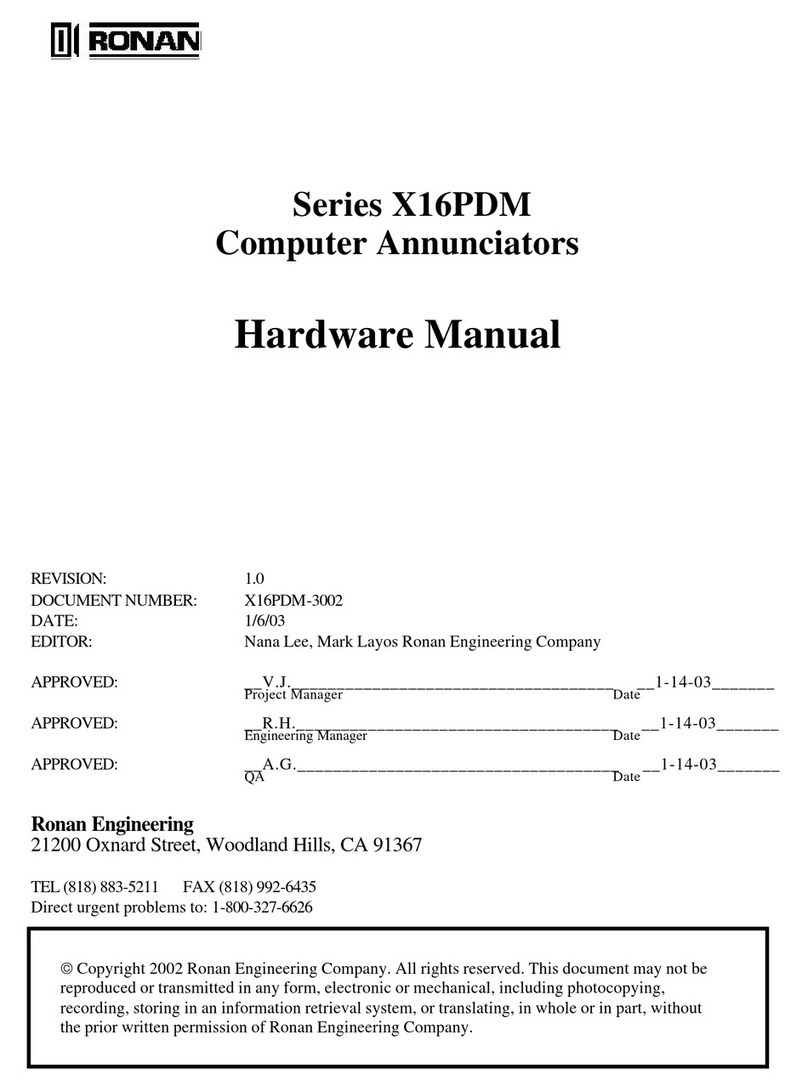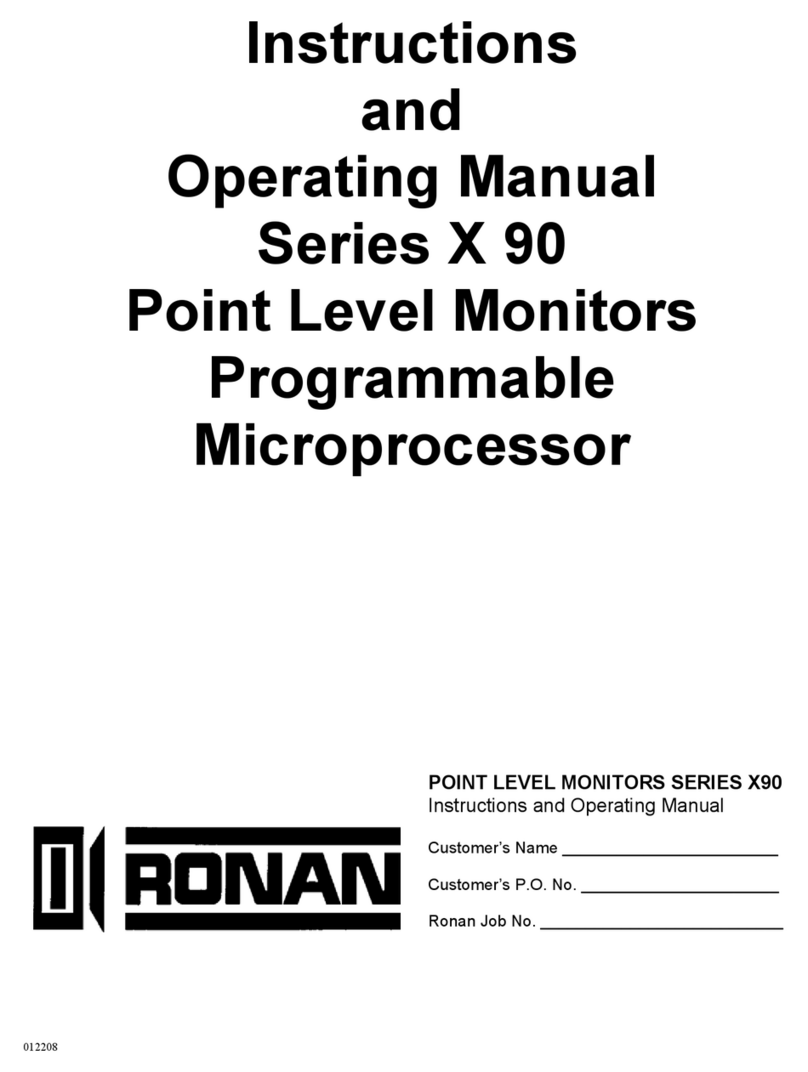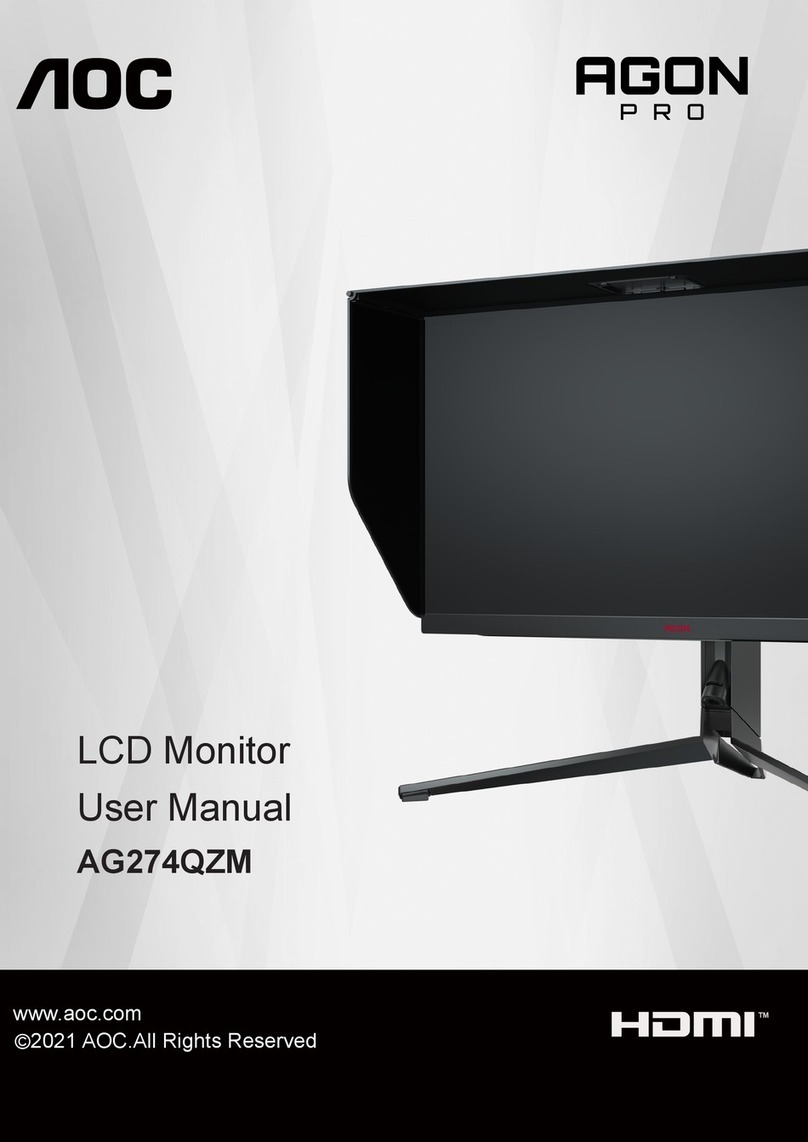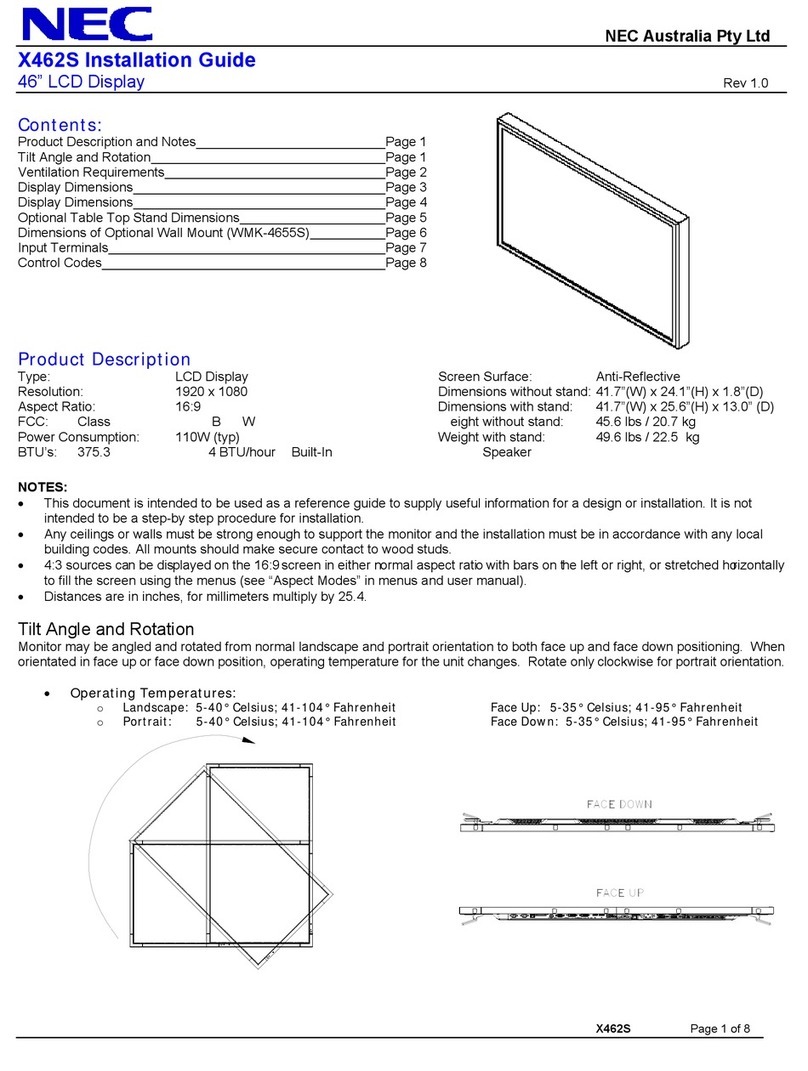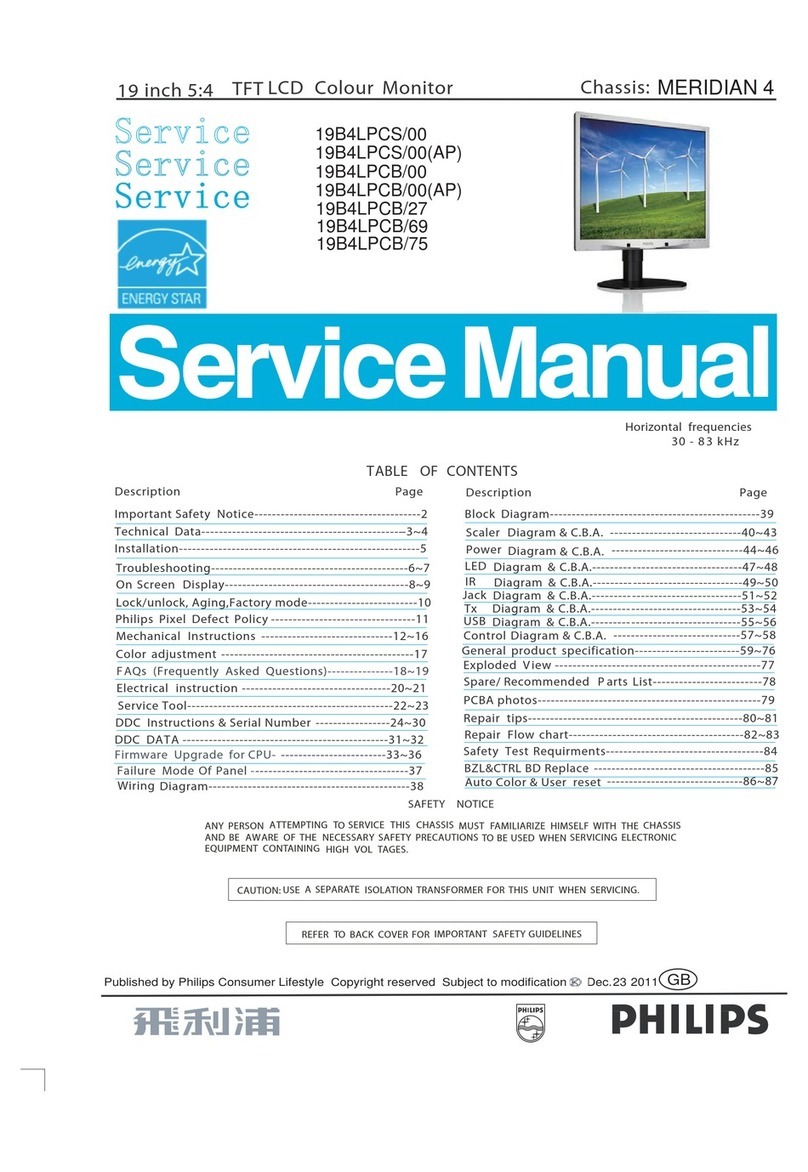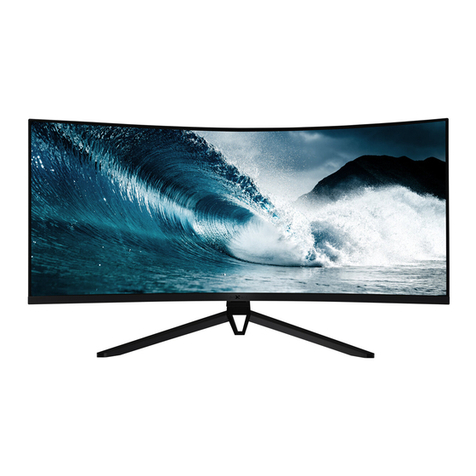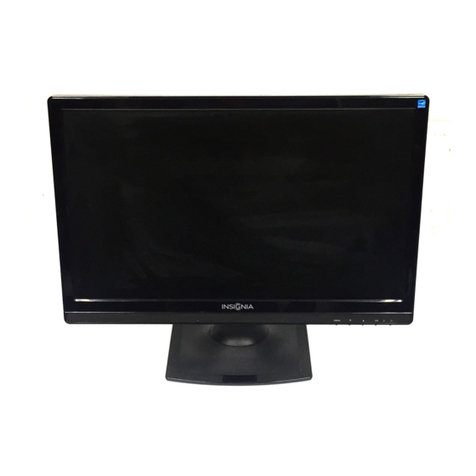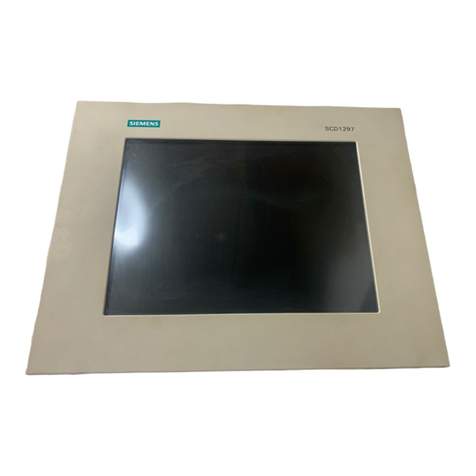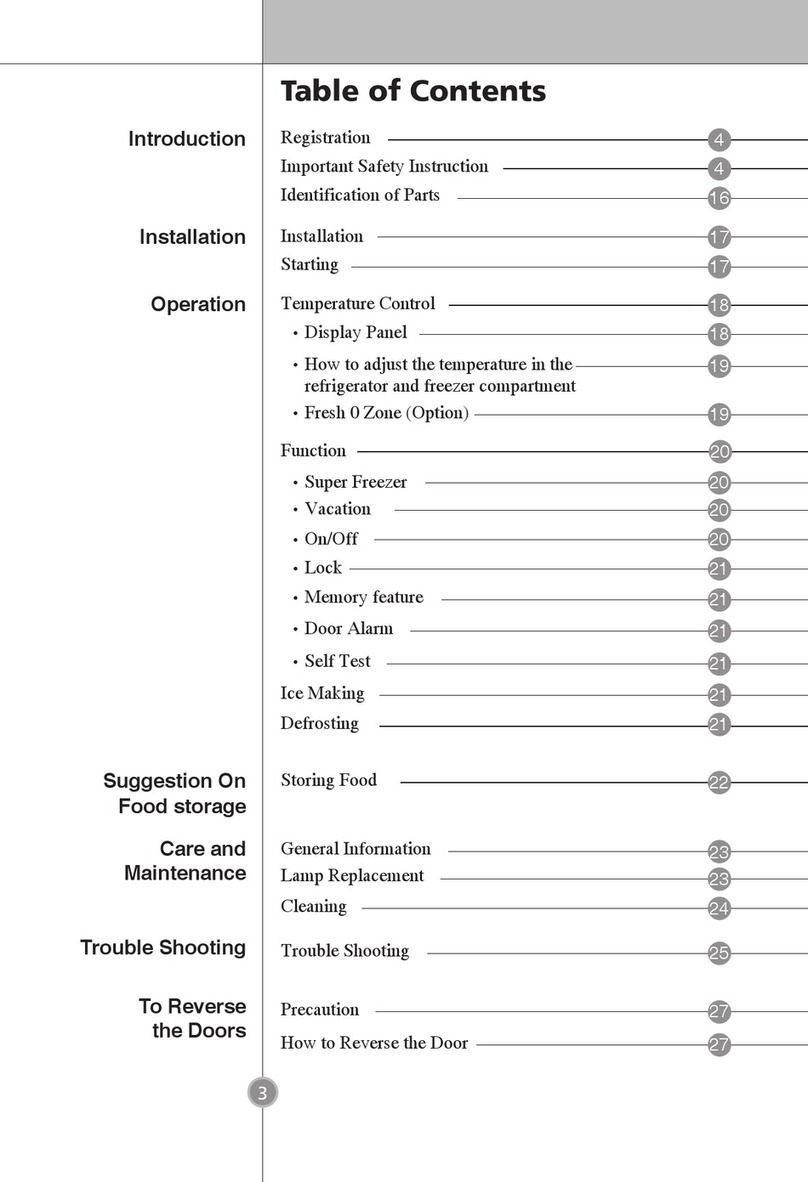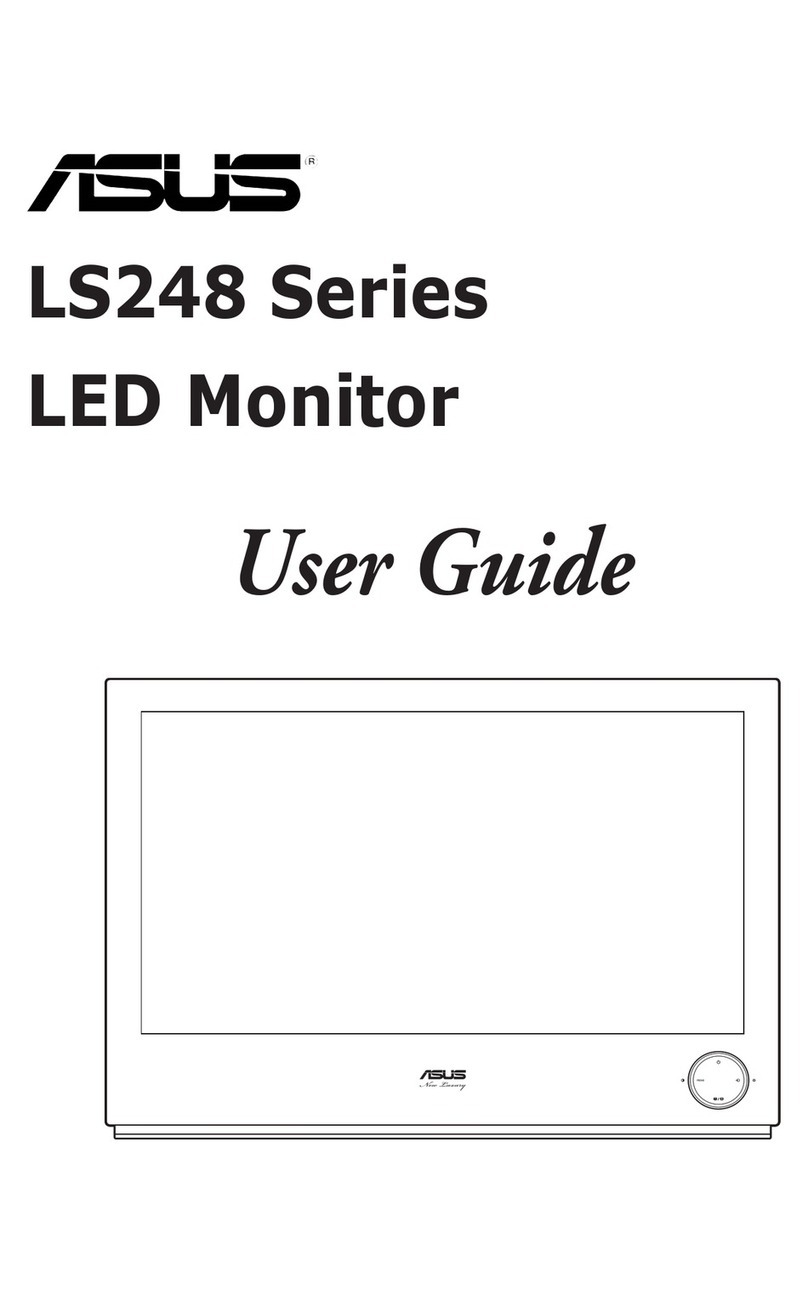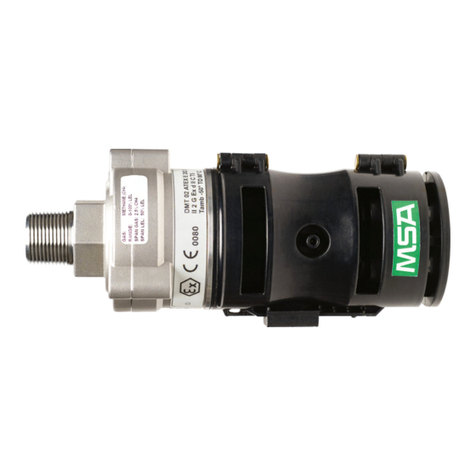Ronan X11CB Series User manual

X11CB INSTALLATION AND OPERATION
Installation
Operation
Manual
Series X11CB
Event Recording
Annunciator
X11CB-3031-IOM 1
Ronan Engineering Corporation
28209 Avenue Stanford
Valencia, California 91355
www.ronan.com
(661)702-1344
(800)327-6626 X11CB-3031-IOM
Rev 0.1

X11CB INSTALLATION AND OPERATION
Revision 0.1
Document Number X11CB-3031-IOM
*Originator / Editor Jim Bates Jun 10, 2014
*Approved by Mike Corwin Jun 10, 2014
*Quality Assurance Tony Gasca Jun 10, 2014
.* - initial for document control
REVISION LOG
0.0 Series X11CB Event Recording Annunciator
Operators Manual 4/4/2013 JLB MC WW
0.1 ECO 16250 - Consistent branding with company
marketing standards 06/10/14 JLB MC TG
Copyright 2013-2014 Ronan Engineering Company. All rights reserved. This document
may not be reproduced or transmitted in any form, electronic or mechanical, including
photocopying, recording, storing in an information retrieval system, or translating, in
whole or in part, without the prior written permission of Ronan Engineering Company.
2 X11CB-3031-IOM

X11CB INSTALLATION AND OPERATION
Table of Contents
1. Overview ......................................................................................................................................6
1.1. Glossary of Terms and Abbreviations....................................................................................8
1.2. SAFETY .................................................................................................................................9
1.3. References.............................................................................................................................9
1.4. Specifications and Power Requirements ............................................................................10
1.4.1. System Voltage .............................................................................................................10
1.4.2. Power Source (System External) .................................................................................10
1.4.3. Temperature / Humidity Range ....................................................................................10
1.4.4. Field Contact Inputs ......................................................................................................10
1.4.5. Response Time .............................................................................................................10
1.4.6. EMI/RFI Compatibility ...................................................................................................10
1.4.7. Relay Contacts..............................................................................................................11
1.4.8. Open Collector Transistor Output ................................................................................11
1.4.9. Outputs .........................................................................................................................11
1.4.10. Controls / Switches......................................................................................................11
1.4.11. Diagnostic ...................................................................................................................11
1.4.12. Event Logging .............................................................................................................11
1.4.13. Network Protocols .......................................................................................................11
1.4.14. Ethernet Interface........................................................................................................11
1.4.15. Special Features..........................................................................................................12
1.4.16. System Size ................................................................................................................12
1.4.17. System Weight ............................................................................................................12
1.4.18. Warranty .....................................................................................................................12
1.4.19. Approvals In Process...................................................................................................12
1.4.20. Installed Environment .................................................................................................12
2. X11CB Hardware........................................................................................................................13
2.1. Module Configurations.........................................................................................................15
2.2. Annunciator Windows ..........................................................................................................15
2.3. HARDWARE CONFIGURATION.........................................................................................16
2.3.1. Field Contact Type and Voltage (FCV) .........................................................................16
2.3.2. Alarm Module Address..................................................................................................16
2.3.3. Alarm Module Configuration .........................................................................................16
2.4. X11CB Annunciator Display Modules .................................................................................16
2.4.1. Microcontroller (U1) ......................................................................................................16
2.4.2. Display and Name Plates .............................................................................................17
2.4.3. Color Coded Bezels ......................................................................................................18
2.4.4. Lens / LED Colors..........................................................................................................18
2.4.5. Monalarm Module: ........................................................................................................19
2.4.6. Binalarm Module: ..........................................................................................................19
2.4.7. Trialarm Module:............................................................................................................20
2.4.8. Quadalarm Module:.......................................................................................................20
2.4.9. Redundant Monalarm Module: ...................................................................................21
2.4.10. Redundant Binalarm Module: .....................................................................................21
2.4.11. Alarm Module Jumper Locations.................................................................................22
2.4.12. Power Sources ............................................................................................................23
2.4.13. Field Contact Inputs ....................................................................................................24
2.4.14. Field Contact Wiring Diagrams ...................................................................................25
2.5. Outputs ................................................................................................................................27
2.5.1. Auxiliary Output Signals.................................................................................................27
2.5.2. Transistor Outputs.........................................................................................................28
X11CB-3031-IOM 3

X11CB INSTALLATION AND OPERATION
2.5.3. LED Lamp Output..........................................................................................................29
2.6. Communication.....................................................................................................................30
2.6.1. CAN Bus Network..........................................................................................................30
2.6.2. Redundant Configurations.............................................................................................32
2.6.3. Input Response Time ....................................................................................................32
2.6.4. Summary of Jumper Settings........................................................................................33
2.7. Optional Auxiliary Contact Module:
Part NO. X11-2049 ...................................................................................................................34
2.8. Cables ..................................................................................................................................35
2.8.1. X11CB to Remote Host- Cat5 Cable.............................................................................35
3. Installation...................................................................................................................................37
3.1. Mounting of X11CB System.................................................................................................37
3.1.1. Mounting the Modules in the Alarm Cabinet ................................................................37
3.1.2. Mounting the Alarm Cabinet to the Panel .....................................................................37
3.2. Alarm Module Terminal Backs.............................................................................................40
3.2.1. Common Alarm Module Terminal Block........................................................................40
3.2.2. CAN Bus Extender.........................................................................................................41
3.2.3. Power Supply Distribution Terminal Block:...................................................................42
3.2.4. Interface Module Terminal Block:..................................................................................43
3.2.5. Interface Module I/O Callout Terminal Block.................................................................44
3.2.6. Customer Supplied Transistor Field Contact.................................................................45
3.3. Wiring Instructions ...............................................................................................................46
3.3.1. X11CB-1000 Rear Terminal Arrangement and Wiring for Dry Field Contacts .............46
3.3.2. X11CB-2000 Rear Terminal Arrangement and Wiring for Dry Field Contacts .............47
3.3.3. X11CB-3000 Rear Terminal Arrangement and Wiring for Dry Field Contacts .............48
3.3.4. X11CB-4000 Rear Terminal Arrangement and Wiring for Dry Field Contacts .............50
3.3.5. X11CB-1000 Rear Terminal Arrangement and Wiring for Live Contacts .....................51
3.3.6. X11CB-2000 Rear Terminal Arrangement and Wiring for Live Contacts .....................52
3.3.7. X11CB-3000 Rear Terminal Arrangement and Wiring for Live Contacts .....................53
3.3.8. X11CB-4000 Rear Terminal Arrangement and Wiring for Live Contacts .....................54
3.4. Power Up .............................................................................................................................58
3.5. Troubleshooting ...................................................................................................................58
3.5.1. General .........................................................................................................................58
3.5.2. Non-operating Alarm System ........................................................................................58
3.6. Dimensions ..........................................................................................................................59
3.6.1. Models X11CB-RelayRack Mounted Series .................................................................59
4. Basic Alarm Sequence letter designations.................................................................................61
4.1. Option number designations................................................................................................61
4.2. First out designations...........................................................................................................62
5. Data Conversion (Bin to Dec) Table...........................................................................................64
List of Figures
Illustration Index
Illustration 1: X11CB Basic LAN System..........................................................................................8
Illustration 2: Caution Labels.............................................................................................................9
Illustration 3: X11CB system front view..........................................................................................13
Illustration 4: Membrane Switches with LEDs.................................................................................14
Illustration 5: Membrane Switches without LEDs............................................................................14
Illustration 6: Board positions within the chassis............................................................................15
Illustration 7: Sandwich Nameplates...............................................................................................17
Illustration 8: Monalarm Plug-In Module.........................................................................................19
Illustration 9: Binalarm Plug-In Module...........................................................................................19
Illustration 10: Trialarm Plug-In Module..........................................................................................20
4 X11CB-3031-IOM

X11CB INSTALLATION AND OPERATION
Illustration 11: Quadalarm Plug-In Module.....................................................................................20
Illustration 12: Redundant Monalarm Plug-In Module.....................................................................21
Illustration 13: Redundant Binalarm Plug-In Module......................................................................21
Illustration 14: X11CB-Alarm Module Jumpers...............................................................................22
Illustration 15: J6 and J7 Redundant / Non Redundant Jumpers...................................................22
Illustration 16: X11-2039PL Power Filter........................................................................................23
Illustration 17: Field Contact Power Selection Adapter Board........................................................24
Illustration 18: Power Selection Adapter Mounted on Alarm Module.............................................24
Illustration 19: Dry Field Contact Schematic...................................................................................25
Illustration 20: Live Field Contact Schematic (Isolated)..................................................................25
Illustration 21: Live Field Contact Schematic (non isolated)...........................................................26
Illustration 22: X11-2049 Relay Board............................................................................................27
Illustration 23: Single CAN Bus no Redundant IM..........................................................................30
Illustration 24: CAN Address Switches ..........................................................................................31
Illustration 25: CAN Address Switch Close Up...............................................................................31
Illustration 26: Dual CAN Bus with Redundant IM..........................................................................32
Illustration 27: X11-2049 Relay Board............................................................................................34
Illustration 28: CAT-5 Cable............................................................................................................35
Illustration 29: CAT-5 Crossover Cable..........................................................................................35
Illustration 30: Ethernet Crossover Cable.......................................................................................36
Illustration 31: Ethernet Patch Cable..............................................................................................36
Illustration 32: RJ-45 Connector.....................................................................................................36
Illustration 33: Cutout Area of the Panel.........................................................................................37
Illustration 34: Front View of the Cabinet after Positioning In the Panel........................................37
Illustration 35: Assembling the Clamp Parts...................................................................................38
Illustration 36: Inserting the Clamp into the Top Center of Cabinet Groove...................................38
Illustration 37: Detail A....................................................................................................................39
Illustration 38: X11-2039PL Power Filter........................................................................................42
Illustration 39: X11CB Interface Terminal (X11C921).....................................................................43
Illustration 40: X11CB-RR Series -1000 -2000 -3000 –4000 .........................................................59
Index of Tables
Table 1: Power Requirements........................................................................................................10
Table 2: Bezel Colors......................................................................................................................18
Table 3: Standard LED Colors........................................................................................................18
Table 4: Field contact Voltage and connection type selection table...............................................24
Table 5: Auxilliary Output Contact Ratings.....................................................................................27
Table 6: Auxilliary Relay Options....................................................................................................27
Table 7: Transistor Driver / LED ....................................................................................................29
Table 8: Summary of the X11-2047 Jumper Settings.....................................................................33
Table 9: X11CB-RR Dimensions....................................................................................................59
X11CB-3031-IOM 5

X11CB INSTALLATION AND OPERATION
1. Overview
The Ronan Series X11CB Computer Annunciator system is a state of the art annunciator system
with event recording capabilities. The X11CB system supports a variety of communications
protocols used in process automation systems. It is designed to provide the most advanced data
acquisition and monitoring system that meets or exceeds the requirements of the process and
power industries in the most economical way.
The system is comprised of a group of alarm modules within one or more interconnected chassis.
A single alarm module monitors its respective field contact input(s) and provides visual and
audible status of those inputs. The quantity of alarm modules and chassis within the X11CB
system is defined by the requirements of that system. The system also contains an integral
interface module that provides Ethernet communication interface to the external host computer,
local network or plant network. Common Trouble Alarm (CTA) and Horns 1 and 2 are generated
by participating local field contacts and remote field contacts sources and configured by the
operator. Optional programmable auxiliary relay outputs are available for each individual field
contact.
The followings are some of the X11CB Annunciators key features:
The system is offered in both the X11CB Window Annunciator model and the X16CB
Remote model with no alarm window display.
Both the X11CB and X16CB are available in a panel mount, rack mount or surface mount
style Chassis. General purpose, NEMA4, NEMA12 and NEMA4X chassis are available
for all chassis types.
The Window Annunciator model features Monalarm, Binalarm, Trialarm and
Quadalarm within Ronan’s standard 3.5 inch (89mm) by 3.5-inch (89mm)
mechanical cabinet modules.
Optional redundancy processor for Monalarm and Binalarm windows systems.
A redundant Monalarm or Binalarm system can be created by adding a daughterboard
alarm module to an existing alarm module.
The Remote field contact multiplexers (X16CB or X501MUX) can be used to provide
remote field contact input monitoring via an Ethernet interface. Individual light indicators
at the multiplexers provide normal or abnormal status output for each field contact.
Each single plug-in module is internally expandable from one to four input
channels to create Monalarm, Binalarm, Trialarm and Quadalarm display units.
Both interface module and alarm module utilize the ARM Cortex M3 Microcontroller. This
is a state of the art high speed compact ARM embedded processor.
Each alarm module contains up to four optically isolated input alarm circuits of high-
speed conventional CMOS integrated circuit design with maximum noise immunity and
reliability.
6 X11CB-3031-IOM

X11CB INSTALLATION AND OPERATION
Field contact inputs can be configured as dry or live inputs with a variety of voltages
available.
The polarity of each field contact is field selectable as normally open or closed using a
jumper selector for each channel.
The most popular industry-wide sequences of ISA, such as A, M, F1A, F2A, F3A, FM,
F2M and F3M are available. For Ringback sequences there are R-1, R-12, and RFAH.
The system is powered by an external regulated 24VDC power supply. Input power to
supply is 90-260 AC or 120-370 VDC input.
IRIG-B input provided for accurate time reference for event time stamping. All events are
recorded to +/- 1mS.
In the event of a lost or failing IRIG-B input the system will time stamp events with an
internal timing system.
User friendly applications such as system configuration, data base server, event viewer
and report generator are utilized to configure and monitor the system.
Software configurable filters provide noise rejection and switch de-bounce functions for
each field contact input.
Hot swappable Alarm Modules allow removal and installation of any alarm module
without effecting the normal operation of the system.
Alarm module addressing resides within the alarm chassis allowing the interface module
to interrogate each alarm module for correct configuration on a periodic basis. Modules
found to be configured improperly will be re-configured to the current locations
configuration. Failing alarm modules can be replaced with spare modules without
removing power and will be re-configured to the locations configuration.
A maximum of 100 modules are allowed per single IM CAN bus monitoring up to 4
channels each for a total of 400 channels of monitoring.
Ethernet interface
Comprehensive user configuration with standard windows software
Note:
Do not rely on any part numbers in this manual for the purpose of ordering
or re-ordering parts for an X11CB unit. As the product matures and parts
are updated, the part numbers may change.
X11CB-3031-IOM 7

X11CB INSTALLATION AND OPERATION
1.1. Glossary of Terms and Abbreviations
AM Alarm Module
AUX Auxiliary Relay
CTA/CA Common Trouble Alarm/Common Alarm
DWG NO Drawing Number
FC Field Contact
GF Global Function / General Function
H1 Horn 1
H2 Horn 2
IM Interface Module
IP Internet Protocol
MEIN First Out / Multiple Engaged First In
NC Not Connected / Normally Closed
NO Normally Open
TCP Transport Control Protocol.
TO Transistor Output
REC-UCM Ronan Engineering Co. Universal Communication Module
8 X11CB-3031-IOM
LAN OR PLANT NETWORK
X11CB CONFIGURATION
X11CB ALARMVIEW
X11CB DATABASE
X11CB
ANNUNCIATOR
Illustration 1: X11CB Basic LAN System

X11CB INSTALLATION AND OPERATION
Relay Definitions
Form A contacts are also called N.O. (Normally Open) contacts or make contacts.
Form B contacts are also called N.C. (Normally Closed) contacts or break contacts.
Form C contacts are also called changeover contacts or transfer contacts.
Also called double-throw typically (SPDT or DPDT, etc.)
1.2. SAFETY
The following safety symbols are used on the SERIES X11CB
Any symbol similar to the ones illustrated above will be found on equipment where the voltage
exceeds 48VAC or 48VDC. These symbols may or may not be in the colors illustrated, and could
be printed in Black and White only.
1.3. References
QA400
:
Design Control
QA4000 : Design Development Quality Assurance Plan
QA4500 : Project Archive
X11CB-3001-IOM : X11CB Configuration Software User’s Manual
X11CB-3031-IOM 9
Illustration 2: Caution Labels

X11CB INSTALLATION AND OPERATION
1.4. Specifications and Power Requirements
1.4.1.System Voltage
LED lamp, Logic: 24 VDC +20%
Field contacts: 24 VDC, 48 VDC, 125 VDC, or 115 VAC.
1.4.2.Power Source (System External)
System Power Supply: 90-260 VAC 50/60 Hz; 120-370VDC
Converter: 24 VDC
To specify the correct power supply, count the number of alarm modules you
need to power from the supply. Calculate the total requirements as follows:
Total Watts = Number of Modules x Wattage for each Module or Card
Model Power (Watts)
X11CB (Interface Module) 5.0 W
X11CB (Alarm Module) 7.0 W
X11CB (Aux Relay Card) 4.0 W
Table 1: Power Requirements
1.4.3.Temperature / Humidity Range
Operating: 0° to 60° C (32° to 140° F)
Storage: -40° to +80° C (-40° to + 176° F)
Operating Humidity: 5% to 95% RH non-condensing.
Storage Humidity: 5% to 95% RH non-condensing.
1.4.4.Field Contact Inputs
Contact
:
Dry or Live
Field Selectable
:
Normally Open / Normally Closed
Interrogation Voltage
:
24 VDC, 48 VDC, 125 VDC, or 115 VAC
Digital time delay filters
1.4.5.Response Time
20 Milliseconds by default. It can be modified using the X11CB Configuration
software.
1.4.6.EMI/RFI Compatibility
CE Compliant
10 X11CB-3031-IOM

X11CB INSTALLATION AND OPERATION
1.4.7. Relay Contacts
All relay contacts are typically Form C, 1 Amp @ 28 VDC; 0.65 Amp @ 115 VAC
1.4.8. Open Collector Transistor Output
Open Collector Transistor Output 200 mA @ 28 VDC
1.4.9.Outputs
Visual
:
Fast Flash, Medium Flash, Slow Flash, Steady on, Intermittent Fast Flash
Audible
:
Dual, Selectable by Cabinet Module
Auxiliary Relays
:
Normally not Energized
Common System Trouble
Open Collector Transistor
(relay available with optional remote I/O terminal assembly)
Common System Reflash
Open Collector Transistor
(relay available with with optional remote I/O terminal assembly) –
1.4.10. Controls / Switches
Momentary Push Button: Local or Remote; Single Pole
Normally Open; +24VDC Switched;
Silence, Acknowledge, Reset, Test, First-Out Reset, GP1 and GP2
1.4.11. Diagnostic
System Trouble Alarm (RUN)
Open Collector Transistor
(relay available with optional remote I/O terminal assembly)
Red System trouble Alarm and Green Power present LED indicators with
optional front panel switch assembly.
Ethernet Status LEDs (Green-Link and Amber-Activity)
1.4.12. Event Logging
Ethernet
:
RJ45 to External Host (Ronan database server application)
1.4.13. Network Protocols
TCP/IP
UDP Ronan Proprietary
MODBUS RTU
DNP3 (with optional REC-UCM)
1.4.14. Ethernet Interface
Ethernet port supports 10Mbps and 100Mbps
Interface to Ronan supplied Software Applications
Software
:
Ronan X11CB_Configuration
X11CB_ALARMVIEW
X11CB_DATABASE
X11CB-3031-IOM 11

X11CB INSTALLATION AND OPERATION
1.4.15. Special Features
Alarm Capacity
:
100 Alarm modules with up to four alarm points each on a single
Interface Module
Redundant Interface / Alarm Module operation with 1 or 2 windows
Event recording capability with local IM storage during lost communication path
Remote monitoring through Ethernet interface
Supports a variety of industry protocols (Modbus RTU, DNP3)
Hot swappable Interface and Alarm Modules
Industrial internal communication protocol (CAN)
1.4.16. System Size
Basic Cabinet Module
:
3.50 inch (88.90 mm) x 3.50 inch (88.90 mm)
Modular design can accommodate virtually any application
Compact design Reduces chassis depth to ~8.00 inches (204.70mm)
1.4.17. System Weight
Per Cabinet Module
:
1.75 pounds (0.79 kg), Not Including Power Supply and
Power Filter Modules
1.4.18. Warranty
One Year
1.4.19. Approvals In Process
UL: Underwriters Laboratories
CUL: Canadian Underwriters Laboratories
CE: Cenelec
1.4.20. Installed Environment
Indoors: Annunciator display Chassis and associated parts are manufactured
NEMA 1 enclosures (general purpose), do not expose a NEMA 1 chassis to
dripping water or other liquids. Equipment may be wiped clean with a mild
cleaner.
Indoors/Outdoors: Annunciator Equipment and associated parts must be installed
in an IP65 type enclosure. Annunciator equipment and related parts must be
installed in an enclosure that provides protection against splashing water, rain,
sleet, snow and hose directed water (NEMA 4). This option is available at time of
purchase from the factory.
Indoors/Outdoors Corrosion Proof: Annunciator Equipment and associated parts
must be installed in an IP65 type enclosure. Annunciator equipment and related
parts must be installed in an enclosure that provides protection against splashing
water, rain, sleet, snow, hose directed water and provide additional protection
against corrosion (NEMA 4X). This option is available at time of purchase from
the factory.
12 X11CB-3031-IOM

X11CB INSTALLATION AND OPERATION
2. X11CB Hardware
The Ronan X11CB Computer Annunciator System with microprocessor based
electronics is assembled from basic 3.50 inch (88.90 mm) by 3.50 inch (88.90 mm)
modules to make up the overall size requirements and number of windows required.
The mechanical modules assembled from aluminum castings and extrusions provide
excellent heat dissipation for a continuously lit annunciator system and feature the
structural strength required in industrial applications.
The rear terminal is designed as a single piece molded plastic assembly per window
for durability. Module array last module (bottom right) contains the Interface Module to connect
system to an external host.
CONSTRUCTION
System Front View
Notice the optional membrane button pad in the lower right hand corner.
X11CB-3031-IOM 13
Illustration 3: X11CB system front view

X11CB INSTALLATION AND OPERATION
System Rear View
Membrane buttons with LEDs can be mounted on the frame either horizontally or vertically.
Membrane buttons only, can be mounted on the frame either horizontally or vertically.
14 X11CB-3031-IOM
Illustration 4: Membrane Switches with LEDs
Illustration 5: Membrane Switches without LEDs

X11CB INSTALLATION AND OPERATION
2.1. Module Configurations
Illustration 6: Board positions within the chassis
Legend: P
:
Power Filter Card
A
:
Alarm Card
I
:
Interface Module
R
:
Relay Card
There are currently 5 different types of chassis. The above illustration shows the Interface
Module chassis on the left, the Power Supply chassis in the middle, and the remaining chassis on
the right.
2.2. Annunciator Windows
The Annunciator windows come in four sizes as shown below. Legends can be engraved or laser
printed on transparency film and inserted into the window frame. Colored LEDs are used to
illuminate in color.
X11CB-3031-IOM 15
1000 Series 2000 Series 3000 Series 4000 Series
R A I RP A RA

X11CB INSTALLATION AND OPERATION
2.3. HARDWARE CONFIGURATION
2.3.1.Field Contact Type and Voltage (FCV)
Field contacts can be set as normally open or normally closed by setting jumper connections on
each alarm module. (Described in the Alarm Module section of this manual)
· Dry contact: The system internal interrogation powered 24 VDC.
· Live contact: Opto-isolated inputs. The opto-couplers provide 2,500- volt isolation.
· 24 VDC, 48 VDC, 125 VDC or 115 VAC, 240 VAC
2.3.2.Alarm Module Address
The alarm module address is described in the appendix of this manual. The address is actually
the CAN bus address and can be within the range of 1 through 254 inclusive.
2.3.3.Alarm Module Configuration
The Alarm and Interface Modules are software configured by the Ronan X11CB_Config
application. Each X11CB application is described in its own manual.
2.4. X11CB Annunciator Display Modules
(Alarm Module)
The X11CB alarm module utilizes an ARM Cortex M3 Microcontroller for the monitoring of each
field contact input to the module. This is a high speed compact ARM embedded processor. The
following are its main features:
2.4.1.Microcontroller (U1)
1. 32-bit RISC performance using ARM® Cortex™-M3 architecture
2. 25-MHz operation
3. 256-KB single-cycle flash
4. 64-KB single-cycle SRAM
5. Controller area network (CAN) module
After the Ethernet connection is made between the host computer and the X11CB-IM
(X11-2048), the X11CB configuration software can reprogram the contents of the Flash
Memory that contains the configuration. (For reprogramming the Microcontroller see
X11CB Software Manual).
The X11CB Alarm module allows field programmable selections of all commonly used ISA
sequences as well as custom sequences from a host computer.
16 X11CB-3031-IOM

X11CB INSTALLATION AND OPERATION
The lamp display of each module can have single, dual, triple or quad alarm window alarm
logic displays for each channel and field contact polarity of each channel is selected by
setting the jumpers on the board.
2.4.2.Display and Name Plates
The colored LEDs can be supplied in a variety or colors to distinguish such functions as
fire alarm or shutdown, etc.
The nameplates are an option to the Visual Annunciator, and are generally supplied with
white front lenses. This lens displays all windows white in non-lit status, changing to the
selected color in on condition.
Each window consists of four LED lamps, altogether with 16 LEDs per lamp module.
(exception being the 3000 series which contains only 12 LEDs)
X11CB-3031-IOM 17
Illustration 7: Sandwich Nameplates

X11CB INSTALLATION AND OPERATION
2.4.3.Color Coded Bezels
The bezels are available in eight colors (black, brown, red, yellow, green,
blue, gray and white) to allow distinction of the different system functions,
such as sequence types, first out groups, common alarm groups, etc.
NOTE:
All lens holders are white .
The following is the color specification for each X11CB type.
0 - Black 5 - Green
1 - Brown 6 - Blue
2 - Red 7 - Grey
4 - Yellow 8 - White
Table 2: Bezel Colors
2.4.4.Lens / LED Colors
Red White
Yellow Blue
Green Amber
Table 3: Standard LED Colors
18 X11CB-3031-IOM

X11CB INSTALLATION AND OPERATION
2.4.5.Monalarm Module:
Part NO: X11CB-1000
The Monalarm plug-in Module features single channel alarm logic with sixteen LED type
indicators illuminating a 3.50 inch (88.90 mm) x 3.50 inch (88.90 mm) wide window.
2.4.6.Binalarm Module:
Part NO: X11CB-2000
The double window Binalarm Module contains two channel alarm logic with each channel
eight LED type indicators illuminating a 1.75 inch (44.45 mm) x 3.50 inch (88.90 mm)
wide window.
X11CB-3031-IOM 19
Illustration 8: Monalarm Plug-In Module
Illustration 9: Binalarm Plug-In Module

X11CB INSTALLATION AND OPERATION
2.4.7.Trialarm Module:
Part NO: X11CB-3000
The three window Trialarm Module provides three 1.66 inch (29.63 mm) high by 3.50 inch
(88.90 mm) wide nameplates and is illuminated by three sets of each channel four LED
type indicators. Each set is driven by one channel of the three-channel alarm logic.
2.4.8.Quadalarm Module:
Part NO: X11CB-4000
The four windows Quadalarm Module represent the highest density of annunciation in the
X11CB series. The 1.75 inch (44.45 mm) high by 1.75 inch (44.45 mm) wide window is
illuminated by four LED indicators.
20 X11CB-3031-IOM
Illustration 11: Quadalarm Plug-In Module
Illustration 10: Trialarm Plug-In Module
Table of contents
Other Ronan Monitor manuals
